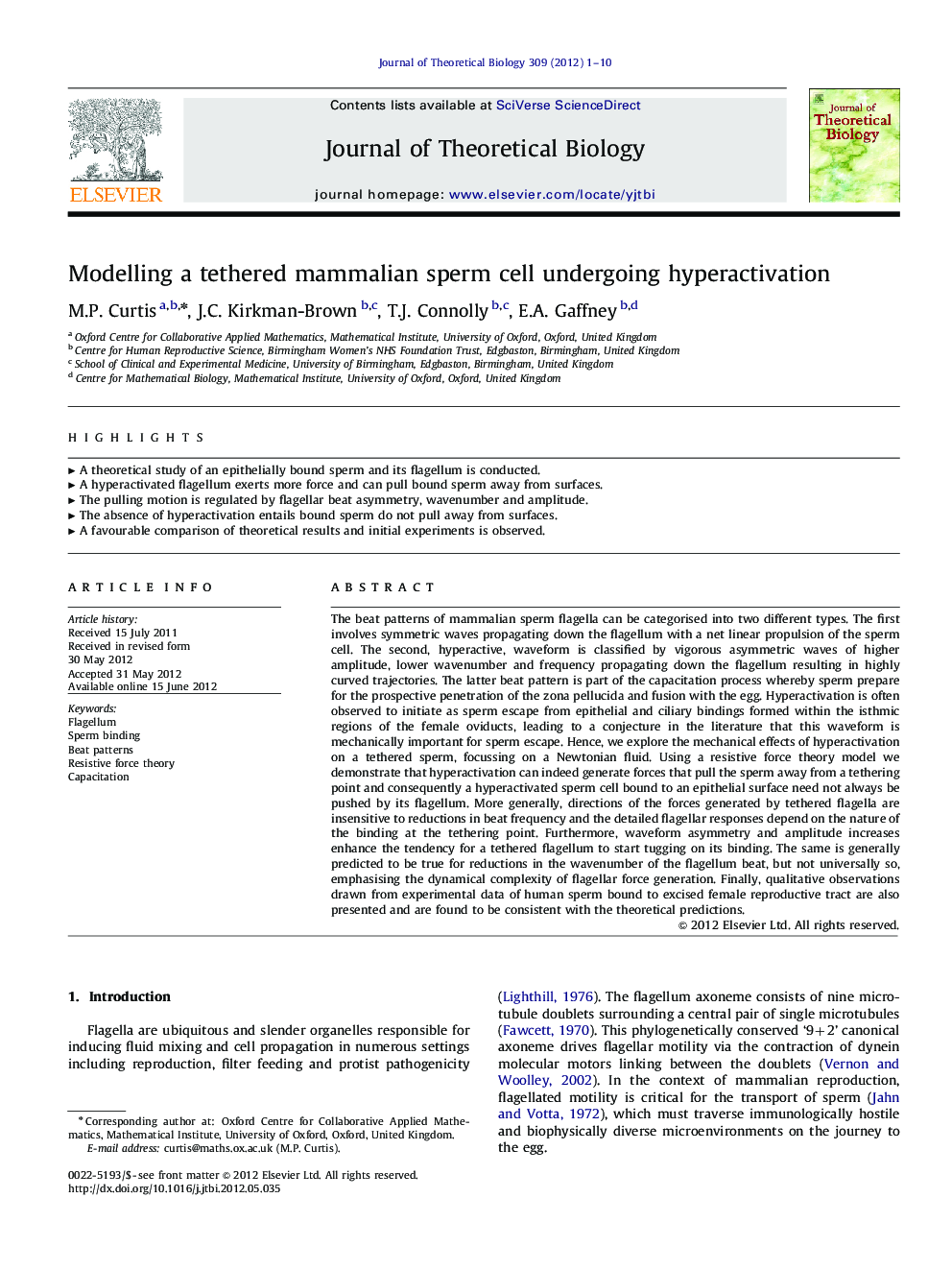| کد مقاله | کد نشریه | سال انتشار | مقاله انگلیسی | نسخه تمام متن |
|---|---|---|---|---|
| 4496603 | 1623901 | 2012 | 10 صفحه PDF | دانلود رایگان |

The beat patterns of mammalian sperm flagella can be categorised into two different types. The first involves symmetric waves propagating down the flagellum with a net linear propulsion of the sperm cell. The second, hyperactive, waveform is classified by vigorous asymmetric waves of higher amplitude, lower wavenumber and frequency propagating down the flagellum resulting in highly curved trajectories. The latter beat pattern is part of the capacitation process whereby sperm prepare for the prospective penetration of the zona pellucida and fusion with the egg. Hyperactivation is often observed to initiate as sperm escape from epithelial and ciliary bindings formed within the isthmic regions of the female oviducts, leading to a conjecture in the literature that this waveform is mechanically important for sperm escape. Hence, we explore the mechanical effects of hyperactivation on a tethered sperm, focussing on a Newtonian fluid. Using a resistive force theory model we demonstrate that hyperactivation can indeed generate forces that pull the sperm away from a tethering point and consequently a hyperactivated sperm cell bound to an epithelial surface need not always be pushed by its flagellum. More generally, directions of the forces generated by tethered flagella are insensitive to reductions in beat frequency and the detailed flagellar responses depend on the nature of the binding at the tethering point. Furthermore, waveform asymmetry and amplitude increases enhance the tendency for a tethered flagellum to start tugging on its binding. The same is generally predicted to be true for reductions in the wavenumber of the flagellum beat, but not universally so, emphasising the dynamical complexity of flagellar force generation. Finally, qualitative observations drawn from experimental data of human sperm bound to excised female reproductive tract are also presented and are found to be consistent with the theoretical predictions.
► A theoretical study of an epithelially bound sperm and its flagellum is conducted.
► A hyperactivated flagellum exerts more force and can pull bound sperm away from surfaces.
► The pulling motion is regulated by flagellar beat asymmetry, wavenumber and amplitude.
► The absence of hyperactivation entails bound sperm do not pull away from surfaces.
► A favourable comparison of theoretical results and initial experiments is observed.
Journal: Journal of Theoretical Biology - Volume 309, 21 September 2012, Pages 1–10